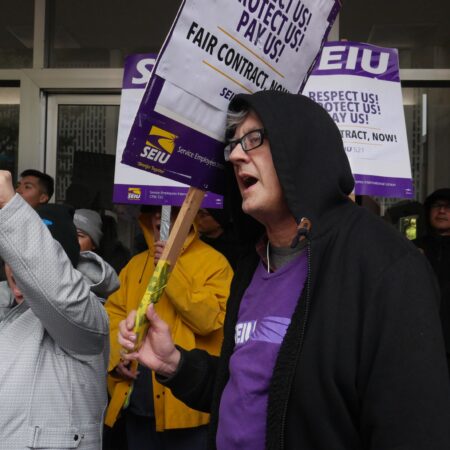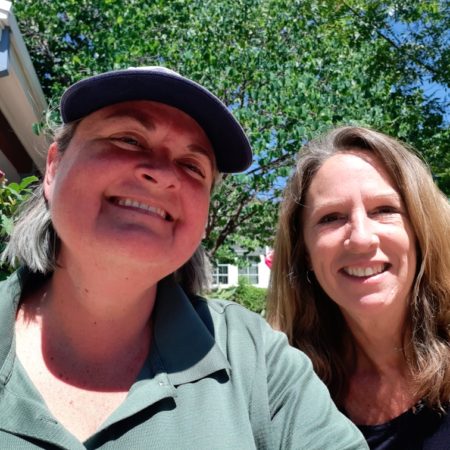MEDIA ADVISORY FOR: Wednesday, April 15, 2015
CONTACT:
National Media Contact: Bartees Cox, bartees.cox@berlinrosen.com, (202) 815-6457
Local Media Contacts: Khanh Weinberg (408) 921-0098; Brian O’neill (408) 678-3362
ON TAX DAY, SAN JOSE WORKERS TO JOIN LARGEST-EVER MOBILIZATION OF UNDERPAID
Fight for $15 Will Go to College, with Students from 200 Campuses, Including UC-Santa Cruz, Set to Protest
Fast-Food Workers to Strike in 200 U.S. Cities, Including San Jose, Protest on Six Continents; Adjunct Professors, Home Care, Child Care, Airport, Industrial Laundry and Walmart Workers to Rally Coast to Coast
SAN JOSE, Calif. – On Tax Day, fast food workers in San Jose and in cities from Pittsburgh to Pasadena will walk off the job, while adjunct professors, home care, child care, airport, industrial laundry and Walmart workers will march and rally in what will be the most widespread mobilization ever by U.S. workers seeking higher pay.
The two-and-a-half-year-old Fight for $15 will go to college, with protests expected by students from 200 campuses. #BlackLivesMatter will join in as the ties between the racial and economic justice movements deepen. And the marches and rallies will stretch around the globe, with protests expected in 100 cities, in 40 countries, on six continents, from Sao Paolo to Tokyo.
Workers chose tax day both because the date, 4/15, is their demand and because they want to highlight the fact that they are paid so little that too many are forced to rely on public assistance to get by.
The nationwide strikes and protests will come two weeks after McDonald’s announced it was increasing salaries for a fraction of its workforce by $1. But rather than mollifying employees, the paltry pay move is attracting ridicule and inspiring even more workers to join the walkout.
WHO:
Workers from McDonald’s and other fast-food restaurants; home care, child care, and security workers; students from UC- Santa Cruz; NAACP.
WHAT:
Largest-ever fast-food strikes; most widespread mobilization of underpaid workers; biggest nationwide campus protests since the anti-apartheid movement
WHEN/WHERE:
9 a.m. TBD
Background
Two-and-a-half years after it launched in New York City, with 200 cooks and cashiers walking off their jobs demanding $15 an hour and union rights, people working in a range of different industries (including home care, child care, airport services, retail and academia) in the US and around the world have joined the Fight for $15 movement. What seemed crazy— workers’ demand for $15 an hour—has caught on and is now reality in SeaTac, Seattle and San Francisco. From coast to coast, cities, states and companies are racing to raise wages well above the federal minimum of $7.25. Now Democrats and leading economists are increasingly pointing to strengthening working Americans’ freedom to form unions as a key solution to boost wages and restore broad-based prosperity, something fast-food workers have been saying since their first strike in November, 2012. And the urgent need for solutions to America’s low-wage crisis is already emerging as a key issue in the run-up to the 2016 election.
On Wednesday, the Fight for $15 —the movement Slate said, “managed to completely rewire how the public and politicians think about wages;” MSNBC said, “entirely changed the politics of the country;” and Fortune said, “transformed labor organizing from a process often centered on nickel-and-dime negotiations with a single employer into a social justice movement that transcends industry and geographic boundaries,”—will wage what is expected to be the largest-ever mobilization of U.S. workers seeking higher pay, with strikes, rallies and protests to be held across the country, including multiple actions in San Jose.
###
Service Employees International Union, Local 521 represents 57,000 public- and nonprofit, private-sector workers in the central Bay Area region and in the Central Valley. Under a Community First vision, we are committed to making sure the needs of our community, and the vital services we provide our community, come first. We believe our communities thrive when residents, leaders and workers recognize that we are all in this together when it comes to our safety, health, and well-being.



